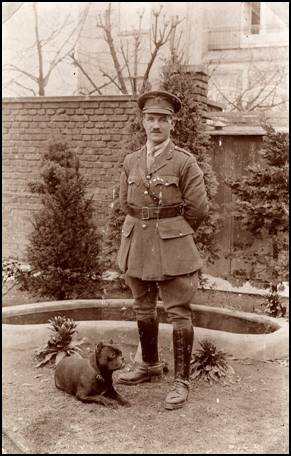
Honorary Captain
CHARLES SHAW TYRIE CALDER
Royal Engineers (Territorial Force)
by
Lieutenant
Colonel Edward De Santis, MSCE, PE, MInstRE
Ó 2021.
All Rights Reserved.

Figure 1.
Charles Shaw Tyrie Calder.
1. INTRODUCTION
The principal references
used in the preparation of this narrative were from a number of sources.
They include census records, official registries in the United Kingdom, a
number of family trees, Army Lists, and The London Gazette.
All sources are contained in the REFERENCE section at the end of the
narrative and are cited throughout in the ENDNOTES.
Every effort has been made to accurately portray the life and military
service of Captain Calder.
This
research was prompted by the author’s acquisition of a photograph album
containing numerous photographs of Captain Calder during his time in the Army. The
album contains 53 photos varying in size from small 2½” x 1¾” snapshots to
3½” x 5½” size photos. Fortunately
many of the photos had been annotated by Captain Calder showing places and
dates. Except where noted, all
photographs in this work are from the Calder album.
a.
Family Information
Charles Shaw Tyrie Calder’s parents were James Calder (1855-1906) and Martha Cuthbert Calder, née Petrie (1854-1915). In addition to Charles, the Calders had four other children, all daughters. His sisters were: Betsy Masterton Calder (1879-1959), Maggie Kinnear Calder (1882-1945), Lizzie Calder (1884 - ?) and Agnes Petrie Calder (1893-1986).
b.
Early Life
Charles Shaw Tyrie Calder was born in Forfar, Angus, Scotland on the 1st of March 1891. In May of 1891 the Calder family was living at 45 West High Street in Forfar.
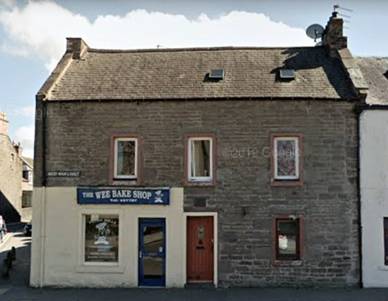
Figure 2. 45 West High
Street, Forfar, Scotland (building with the red door)
(Photograph courtesy of Google Earth)
The 1891 Census of Scotland provides the following information regarding the Calder family:
1891
Census of Scotland
|
Address:
45 High Street, Forfar, Angus |
||
|
Name
and Surname of each Person |
Relation |
Age |
|
Martha
Calder |
Head |
37 |
|
Betsy
Calder |
Daughter |
12 |
|
Maggie
Calder |
Daughter |
9 |
|
Lizzie
Calder |
Daughter |
7 |
|
Charles
Calder |
Son |
2
mos |
The 1901 Census of Scotland provides the following information regarding the Calder family:
1901
Census of Scotland
|
Address:
20 Montrose Road, Forfar,
Angus |
||
|
Name
and Surname of each Person |
Relation |
Age |
|
James
Calder |
Head |
46 |
|
Martha
P. Calder |
Wife |
47 |
|
Betsy
Calder |
Daughter |
22 |
|
Maggie
Calder |
Daughter |
19 |
|
Lizzie
Calder |
Daughter |
17 |
|
Charles
Calder |
Son |
9 |
|
Aggie
Calder |
Daughter |
7 |
The 1901 census shows James Calder back at home with his family and includes Agnes (“Aggie”) Petrie Calder who had been born on the 10th of August 1893. Unfortunately the Calder family home at 20 Montrose Road no longer exists.
James Calder died at the Montrose Road address on the 13th
of May 1906 while Charles was 15 years old and presumably a student at a local
school in Forfar. In 1914 at the age
of 23, after receiving his degree in Architecture, Charles joined the Royal
Commission on Ancient and Historical Monuments, Scotland (RCAHMS).
While with the Royal Commission, and during the early years of the Great
War of 1914-1918, he explored Neolithic cairns and buildings in Scotland.[1]
3. COMMISSIONING
Charles was commissioned a 2nd Lieutenant in the Royal Engineers Territorial Force from an Officer Cadet Unit on the 30th of March 1918.[2] From the photographs in his album he took part in bridging training in Newark on Trent and Southwell in Nottinghamshire and on the River Barrow at Monasterevan, Ireland. During his time in Ireland he was posted to The Curragh.
|
|
|
|
Figure
3. Officers and Men on the Embankment Under a Timber Trestle Bridge. |
Figure
4. Officers and Men on the
Completed Timber Trestle Bridge. |
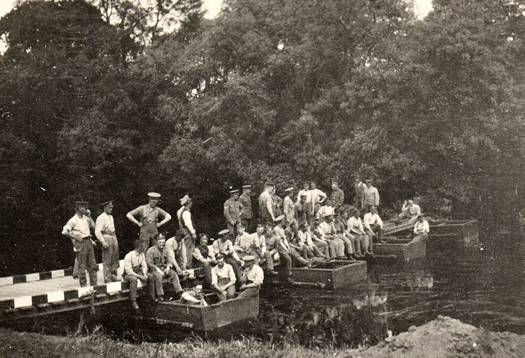
Figure 5. Calder’s Section
Constructing a Float Bridge.
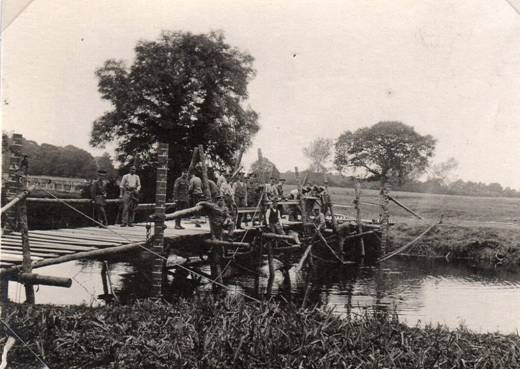
Figure 6. An Expedient
Trestle Bridge Under Construction.
4.
POSTINGS AND CAMPAIGN SERVICE
The
Great War of 1914-1918
Although Charles Calder would have been of age to join the forces at the start of the Great War in 1914, for some reason he was not commissioned until early in 1918, only about eight months before the end of the war. Since he was commissioned from an Officer Cadet Unit at a university, perhaps his studies kept him from joining sooner. His work with the RCAHMS may have been another reason for his delayed commissioning. In any case he did join up and after a period of just over five months, most of that time spent in training, he was posted to France on the 6th of October 1918[3] with his company, the 529th (East Riding) Field Company, Royal Engineers, a unit of the British 3rd Infantry Division.[4]
The 529th Field Company was involved in the Battle of Cambrai between the 8th and 9th of October, so depending on how quickly Calder joined the company after arriving in France, he may or may not have taken part in this action. In all likelihood he was with the company at the Battle of the Selle during the period from the 17th through the 25th of October and at the Battle of the Sambre on the 4th of November.[5] Following the Armistice on the 11th of November 1918, Calder and his company became part of the occupation forces in Germany. A photograph in the album dated 11 December 1918 shows the transport section of the 529th Field Company crossing into Germany.
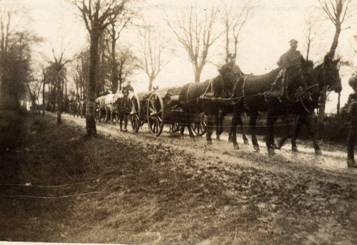
Figure 7. 529th
Field Company Transport Crossing the German Frontier.
Photographs in the album show that Calder was in Cologne and Blankenheim, Germany during his time with the occupation forces.
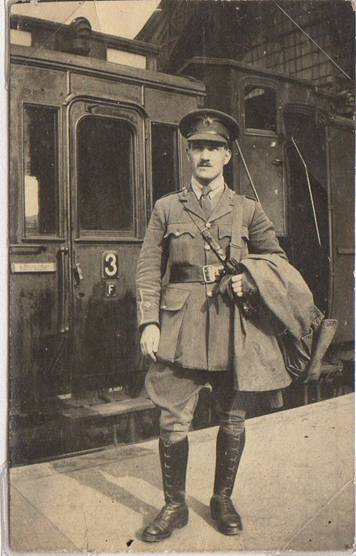
Figure 8. 2nd
Lieutenant Calder at a Railway Station in Cologne, Germany.
On the 29th of September 1919 Calder was promoted to the rank of Lieutenant,[6] presumably while he was in Germany and before he returned home for demobilization from the Army. For his service in the Great War he was awarded the British War Medal and Victory Medal as shown in the Medal Index Card (MIC) below.
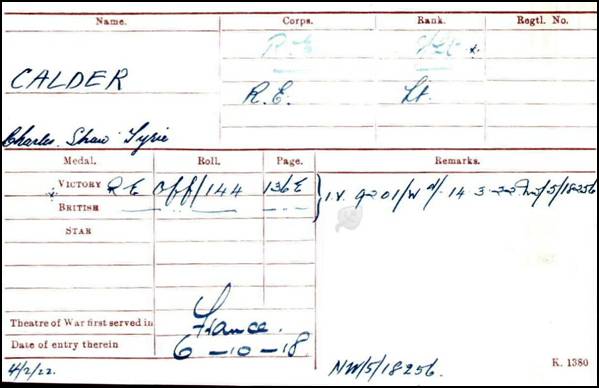
Figure 9. The Great War
Medal Index Card of Lieutenant C.S.T. Calder, R.E
(Image courtesy of Ancestry.com)
On the 29th of January 1922 Calder applied to the War Office for the medals he had earned during the war. At the time that he applied for the medals he was residing at 15 Queens Street in Edinburgh. His medals were issued to him on the 14th of March 1922.
World War 2
Charles Calder retained his rank in the Territorial Force after the Great War and in the Territorial Army during the interwar years. When war broke out in 1939 Calder appears to have been eager to do his part again in the Army. On the 14th of January 1941 at almost 50 years of age he relinquished his commission in the Territorial Army to enlist in the ranks.[7] However, because of his prior service and his education and experience, the Army appears to have seen fit to reinstate him as an officer in the Territorial Army. He served with the Royal Engineers throughout the war and in 1949 he retired from the Territorial Army with the rank of Lieutenant (Honorary Captain). He probably served at home (in the U.K.) with no active service abroad.
The following sections are presented in tabular form to summarize
Calder’s promotions and the medals that he was awarded or may have been
awarded during his time in the Army. They
are provided to give the reader easy access to these aspects of his military
career. The tables are followed by
sections dealing with his marriage, personal information and post-service
life.
5.
PROMOTIONS
Date of Promotion or Appointment |
Rank
or Position |
|
30 March 1918 |
Commissioned a 2nd Lieutenant in the Royal Engineers (Territorial Force). |
|
30 September 1918 |
Promoted Lieutenant. |
|
1949 |
Retired from the
Territorial Army as an Honorary Captain. |
For his service in the Great War Lieutenant Calder was awarded the British War Medal and Victory Medal. He could possibly have received the 1939-45 War Medal, Defence Medal and Territorial Efficiency Medal or perhaps the Territorial Decoration for his service during the Second World War. No evidence has been uncovered to verify these awards, but given his service during WW2, these awards are possible. The medals mentioned here are shown below.
|
|
|
|
|
|
British
War Medal and Victory Medal |
Defence
|
1939-45 |
Territorial
Decoration |
Honorary Captain Charles Shaw Tyrie Calder was released from service in 1949,[8] having retired from the Territorial Army. His total service was reckoned as shown in the tables below:
Location |
Period
of Service |
|
Home |
30 March 1918 – 5 October 1918 |
|
France |
6 October 1918 – 30 September 1919 |
|
Home (Territorial Army) |
1 October 1919 - 1949 |
Location |
Period
of Service |
|
Home Service |
190 days |
|
Service Abroad |
372 days (approximate) |
Territorial Army
Service
|
29 years and 255 days (approximate) |
Total Service
|
30 years and 197 days (approximate) |
NOTE: The periods of service in years and days are approximate because no days and months of certain events are known definitely; that is, his date of return from abroad after the Great War and the exact date of his retirement from the Territorial Army in 1949.
9. POST AND PRE-SERVICE
LIFE
Charles Calder was appointed an Assistant Architect and Draughtsman with the Royal Commission on Ancient and Historical Monuments, Scotland on the 6th of June 1924.[9] After his appointment he became active as an Investigator in the resurgence of studies of Neolithic sites in Scotland.[10]
By 1931 he had become an Associate of the Edinburgh
Architectural Association and during the early 1930s he excavated two Iron Age
roundhouses on the Calf of Eday and in the late 1930s he worked on other sites
on Eday and the Calf of Eday, an uninhabited island in Orkney, Scotland lying
north east of Eday, and prepared the first complete description of the Dwarfie
Stane on Hoy. The Dwarfie Stane is a
megalithic chambered tomb carved out of a titanic block of Devonian Old Red
Sandstone located in a steep-sided glaciated valley between the settlements of
Quoys and Rackwick on Hoy, an island in Orkney, Scotland. The stone is a glacial
erratic located in desolate peatland. There
is an entrance and a hollow area in the stone that is thought to have been a
tomb.
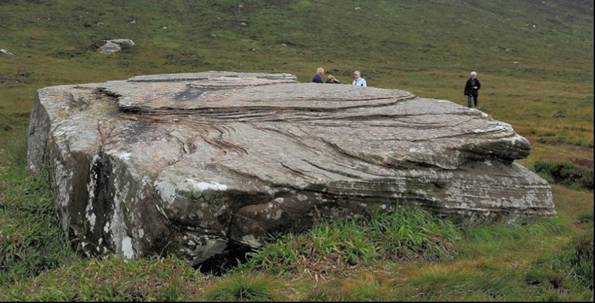
Figure
10. The Dwarfie Stane.
(Photograph courtesy of Wikipedia)
Calder’s residence address in 1931 was 122 George Street in Edinburgh, an address associated with His Majesty’s Office of Works during that period. In 1939 his home address was 15 Gardiner Road, Blackhall and his business address during this same year was 27 York Place in Edinburgh.[11]
In 1940 Calder conducted an emergency excavation of a broch in Caithness before it was destroyed to make way for the Royal Air Force field at Skitten. He found a saddle quern, grain rubbers, dishes, knocking stones, anvils, tether stones, pot lids, pounders and smoothing stones, a pestle and a whorl as well as fragments of circular querns dating after the Roman period.[12]
In 1946 Charles Calder was appointed the Senior Investigator by the RCAHMS. He explored the Stanydale site, a temple on mainland Shetland, in 1949 and in 1951 he was appointed the Principal Investigator for the RCAHMS. He retired in 1960, having distinguished himself as an Archeologist, Architect, Architectural Historian, Draughtsman and Surveyor.[13]
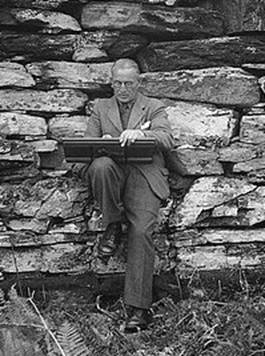
Figure 11. Putting the
Finishes Touches to a Survey Drawing in 1947.
(Photograph courtesy of the RCAHMS and Wikipedia)
Charles Shaw Tyrie Calder died at St. Margaret’s Hospital in
Auchterarder, Scotland on the 3rd of December 1972 at the age of 81.[14]
10. MARRIAGE, FAMILY AND
PERSONAL INFORMATION
a. Parents
Charles Calder’s father, James Calder, had been born in the Sparrowcroft section of Forfar, Scotland on the 24th of June 1855. The 1901 Census of Scotland indicates that he was a Mason by trade. He died in Forfar on the 13th of May 1906 at the age of 51.[15]
Charles’ mother, Martha Cuthbert Calder, was born in Forfar in 1854 (exact date unknown). She and James Calder were married on the 31st of December 1877 at 6 Archies Park in Forfar. Martha died at 20 Montrose Road in Forfar on the 11th of July 1915 at the age of 61.[16]
b. Spouse
Following his demobilization from the Army Calder returned to Scotland. On the 7th of September 1921 he married Isabella Bird (1892-1940) at 35 Cleptington Road in Dundee, Angus. Isabella was the only daughter of Mr. John Bird of Calcutta, India.[17] Isabella Calder died in Edinburgh on the 31st of January 1940.
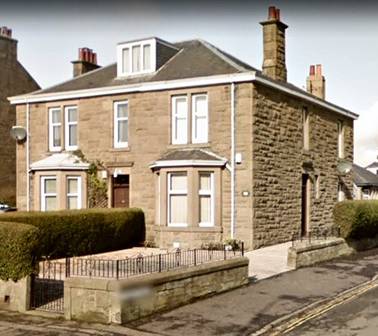
Figure 12. The House at 35
Clepington Road in Dundee where the Calders Lived when They were Married.
(Photograph courtesy of Google Earth)
c.
Children
James Bird
Calder
On the 10th of October 1922 Isabella Calder gave birth to a son, James Bird Calder (1922-2006) in Edinburgh. James emigrated to the United States and took up residence in Derry, Rockingham County, New Hampshire. He died there on the 1st April 2006 at the age of 83.[18]
Mooreen
Calder
Charles’ sister Mooreen was born in Edinburgh on the 12th of January 1925. Like her brother she emigrated to the United States and resided in Reading, Middlesex County, Massachusetts. She died there on the 31st of January 1988 at the age of 63.[19]
A SELECTION OF PHOTOGRAPHS FROM THE CALDER ALBUM
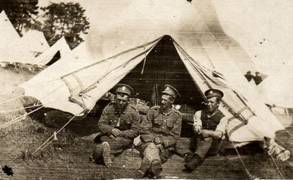
Figure
13.
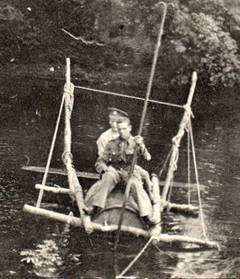
Figure 14.
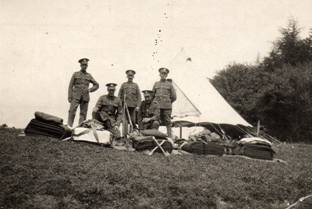
Figure 15.
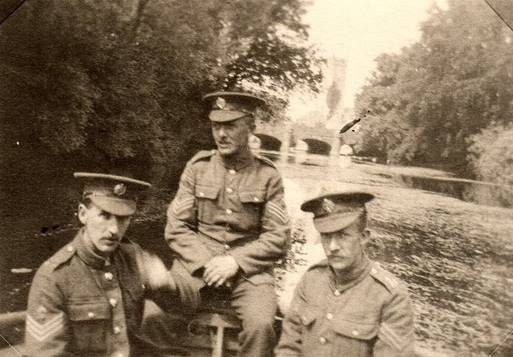
Figure 16. These
Non-Commissioned Officers are Identified by Calder as:
(from left to right): Quartermaster Sergeant Brackenridge, Sergeant Philip and
Sergeant McDonald.
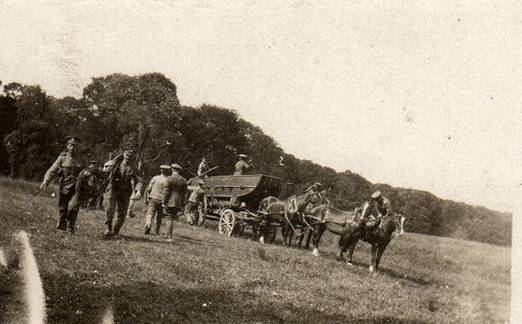
Figure 17.
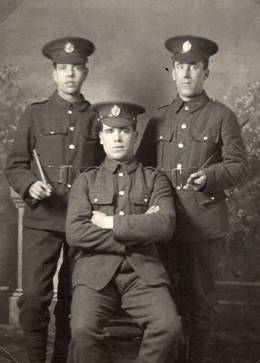
Figure 18.
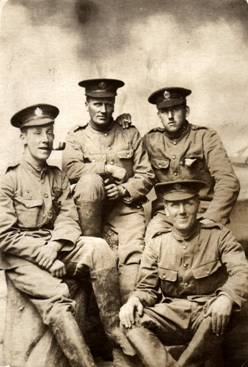
Figure 19.
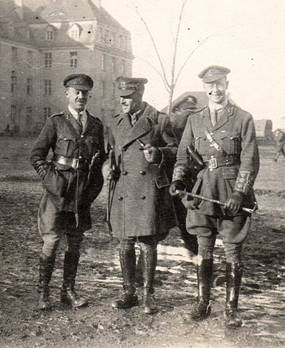
Figure 20. Calder with Two
Other Officers.
(This photo shows Calder as a pipe smoker)
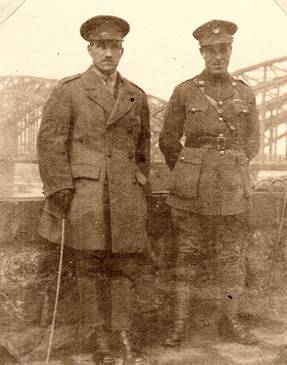
Figure 21. Calder with an
Officer from a Light Infantry Regiment.
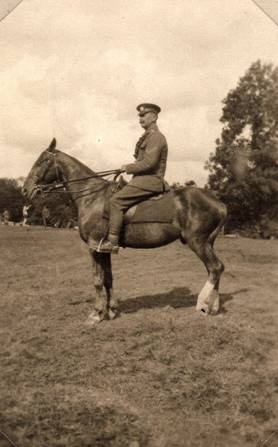
Figure 22. A Corporal from
the Company Mounted Section.
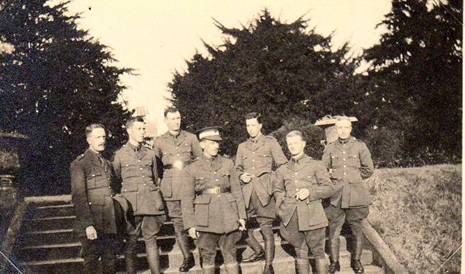
Figure 23. Calder with a
Group of Officers on a Training Exercise.
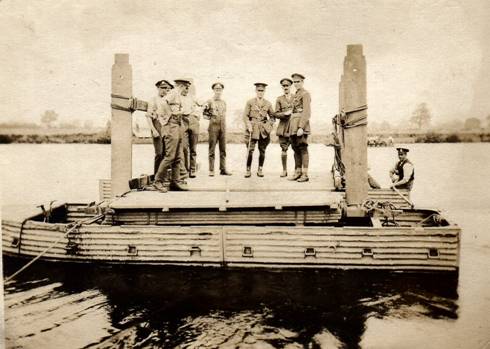
Figure 24. Calder with Other
Officers and Men on a Raft at Newark.
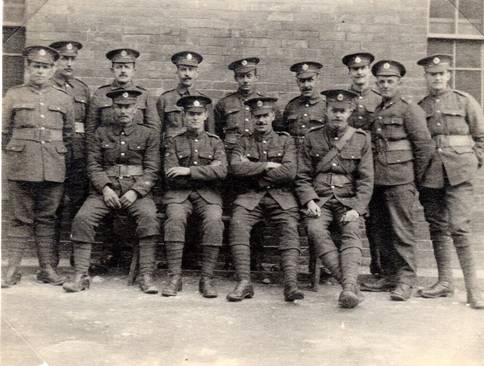
Figure 25. Men from
Calder’s Section in France.
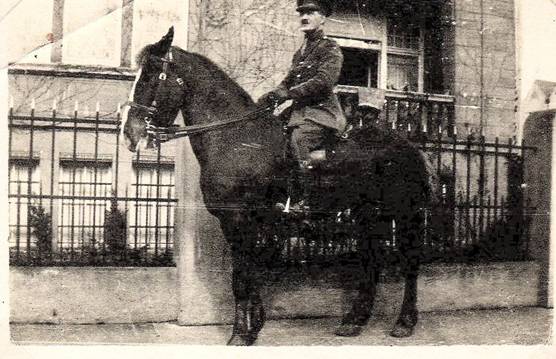
Figure 26. Lieutenant Calder
on His Charger in France.
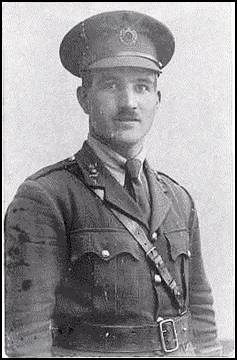
Figure 27. A Studio Portrait of Lieutenant Calder.
REFERENCES:
Army Lists
Monthly Army List, June 1919, p. 834b.
2.
Monthly Army List, December 1920,
p. 841a.
Census
Internet Web Sites
Wikipedia:
Charles S.T. Calder.
Family Tree
https://www.ancestry.com/family-tree/person/tree/151907324/person/262018783083/facts
https://www.ancestry.com/family-tree/person/tree/32972946/person/18364589122/facts
Internet Web Sites
London Gazette
Military Documents
Great War Medal Index Card
Periodicals
Photographs
Original photographs from the Calder collection with notes written on reverse.
ENDNOTES:
[1] Wikipedia
[2] The London Gazette, 10 April 1918.
[3] Medal Index Card.
[4] Note on a photograph in the collection.
[5] Battle Honours of the Royal Engineers. The Royal Engineers Journal, 1925-1932.
[6] The Monthly Army List, December 1920.
[7] Wikipedia.
[8] Ibid.
[9] The London Gazette, 6 June 1924.
[10] Wikipedia.
[11] DSA Architect Biography Report.
[12] Wikipedia.
[13] Ibid.
[14] Family tree.
[15] Ibid.
[16] Ibid.
[17] Ibid.
[18] Ibid.
[19] Ibid.